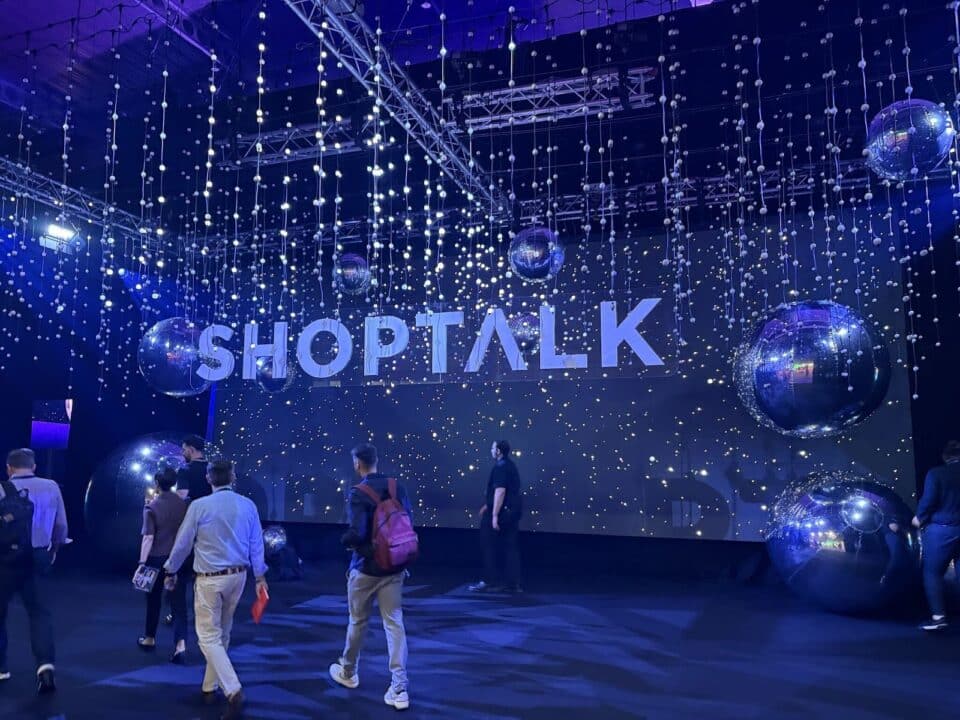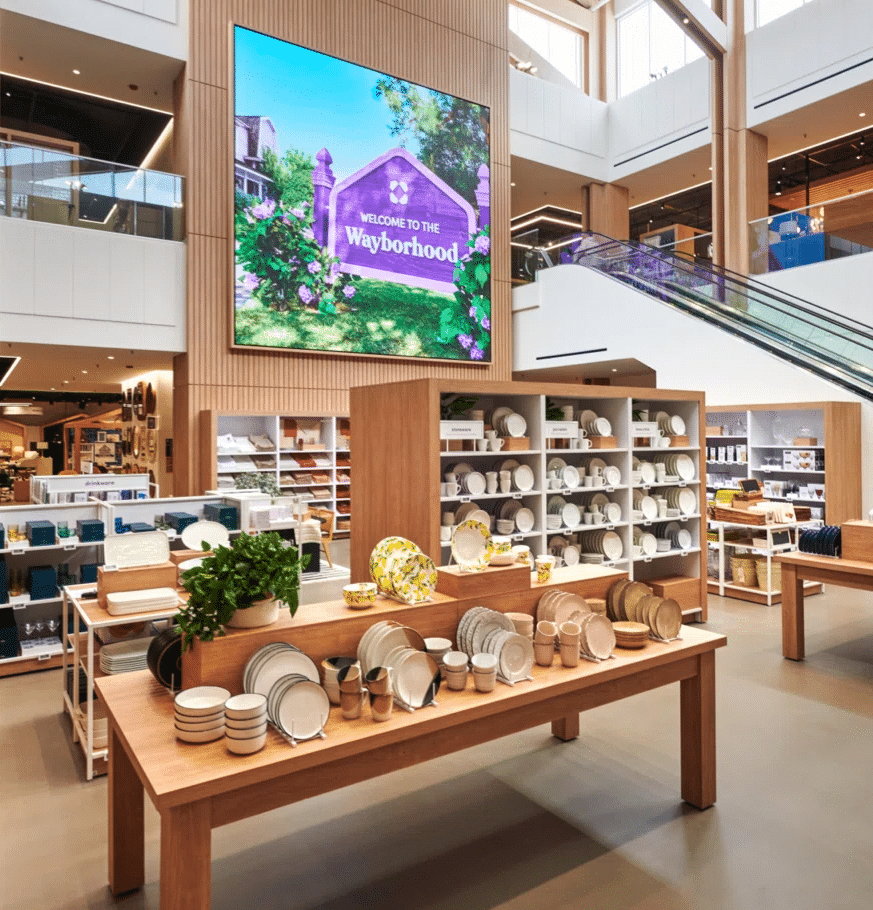Trendsetters: Future of Retail – Mark Collin of Thoughtworks on Agile Retail Development
Insider Trends brought 250 people together for its ‘Trendsetters: Future of Retail’ event at the British Library in London on Monday 18th March. 4 trendsetters presented their most exciting projects and predictions.
Mark Collin, Head of Retail Europe at Thoughtworks, describes how large retailers can start to behave more like startups by using agile development processes. Agile development cycles mean businesses can decide which paths to pursue based on proven results rather than hunches. And this means they can bring in more revenue in much less time to get ahead of competitors.
You can watch the whole presentation using the video above or use the edited transcript below to skip to the insights that you need.
If you have any questions or thoughts, do share them with us in the comments.
Mark’s transcript:
ThoughtWorks are behind a lot of companies that you would interact with most days, but are not very well known in the consumer space. Roy Singham founded ThoughtWorks 20 years ago. He was a political and social activist who wanted to bring together the most creative thinkers and technologists in the world to do good things, to lead the industry from a technological perspective and use those capabilities to do some amazing things around the world. We support UNICEF, we build applications to reunite families in Africa. So a lot of the things that you’ll see in a very commercial sense are applied in very different ways in developing countries.
This year, our biggest investments will be in the Southern Hemisphere. We’ve just opened offices in Kampala, Johannesburg, and Recife in Brazil. A lot of our work that is front facing in the mature markets is put to really good use elsewhere in the world. There are 2,300 of us now. As a startup 20 years ago we had a bumpy ride and nearly went bust, but it was retail that saved us from that collapse.
Ten years ago we built a multichannel system for Dixons in the UK, the first of its kind in Europe. It was a point of sale that didn’t just deal with transactions in the store, but thought about a more holistic view of consumer retailing. When we put this thinking together, we’re still looking at the same equations in retail – one plus one generally gets two. We’re trying to find ways to get more out of the one plus one.
We’re still looking at price, product, place and promotion as the foundations for good retailing. But how do we help big retailers to be more responsive? All the retailers I spend time with want to be part of the popup culture. Their challenge is that they’ve spent 90 years building process and bureaucracy in hierarchical organisations that are very difficult to change. But they have to change – a consumer revolution is happening and the organisations that are standing still or not adapting are going out of business. That is a fact that is seen almost every day.
We define this one-plus-one equation as an ability to get more out of the same thing. However, we see some characteristics of organisations that are really important to have there in the first place. If you look at some of the top retailers, they’re built for efficiency, not for speed. We’re helping them to introduce capabilities and skills in retail agility, that is, how to be responsive and experimental – failing fast and behaving more like lean startups.
Diagram of a classic agile development cycle
These are approaches, but they’re mostly a mindset. Our challenges early on in working with those organisations is to try and break down those stereotypes and bureaucracies around how they work. That then leaves room to create some slack in a system that helps them have this space for innovation. Then we can help to create innovation engines that allow them to test ideas quickly and drop them into the market.
In big organisations, the guys that sit around the boardroom and say, “This year we’re going to do this and isn’t it going to be great.” We call this the “exec hunch”. Most of them fail. In a big organisation there are layers of ideas, whereas, in startups, the idea IS the business. But what we don’t want is for those to fail often. We might want them to fail fast so we can move on to the next idea, but we don’t want them to fail often. We can test those ideas by simply asking the customer what they want.
However, there seems to be an innate barrier to asking a customer what they thought of their experience or what could be done better next time. We try and guess and innovate and bring these great ideas to market. The one thing that retailers, particularly big retailers have an abundance of is data, but most of them still haven’t figured out how to put that data to good use.
I was at NRF in New York January, the biggest retail technology conference in the world. I use it as a barometer each year to see what large retailers are thinking, what interesting technologies are coming to market. A lot of the sessions talked about Minority Report, this time that we’re in where everybody knows everything about us. But it’s absolutely not this. This is a mindset thing, and we bake this into the start of anything we’re going to do with a client.
We go back to some approaches from the ‘50s, which are about building, measuring and learning. So whatever we’re going to build, we must be able to measure it. From that, we’ll learn. That allows us to keep going round this loop as quickly as possible.
We always recommend to start as small as is possible – to develop a minimum viable product. What is the smallest thing you can put into the market that has value that you can learn from? Some of the things we built ended up being beautiful propositions, highly interactive and hugely successful in their ability to convert and engage customers.
We get brought into a lot of large retailers who are having a terrible time. They need to get to market and they’re not sure what to go to market with. They say they need to get something out there. While we agree that getting something out there is important, it’s identifying what that something is and it’s using that customer data triangle to validate the idea. It’s not just about being out there, it’s about how they compete with their competitors and what their proposition is. What does it stand for and how do we define it in the smallest possible way?
Big retailers invest millions of pounds each year in some of the things we’ve talked about today. We think that we’re all amazingly sophisticated as human beings, but we have some primal needs that need to be dealt with first. We need to make sure we get the basics right. Stop trying to second-guess what I’m going to buy, what I might like to buy next week, whether I’m just coming in for a random shopping experience. Let’s get back to basics.
If you’ve been in the retail industry and spent time with technology companies that exist there, for many years the focus has been on IBM, ThinkSmart, Oracle, Think Big. But they’re not the companies that are front of mind for most retail executives now. The questions are now: how do retailers make use of Google? How do they protect their businesses from Amazon? Most big food retailers are running scared because as soon as Amazon start delivering food, it could be game over. They do it so well and can deliver to your door. We’ve heard of a 15-minute delivery timeslot, it’s just incredible. So the power of the market is quite overwhelming.
Other questions – how can retailers be more like Apple? Most retailers set their bar against Apple as the exemplar of customer experience. How do they interact with Facebook and engage their customers on those different channels? Retailers have done some interesting, innovative things in a lean-startup mindset.
When Tesco launched their business in South Korea, they didn’t want to invest billions setting up hundreds of stores to take on the big incumbent. They partnered with Samsung and bought up lots of advertising space in metro stops, bus stations, and created what looked like stores and allowed customers to scan and create shopping baskets in their downtime. They were using the downtime of the customer to create their shopping experience. They’re now number two in South Korea. They have become so successful that the government is trying to suppress opening hours because they’ve managed to break and disrupt the market. The incumbent might have some powers of persuasion in government. Tesco are being challenged. Once they tested this in a new market, they realised Koreans were time poor, didn’t like doing grocery shopping, and now they’ve started to bring this idea back to the UK. In Gatwick Airport, you can create your return-from-holiday basket and it will be there for you when you land.
It is hard to trust the customer or to place things in the hands of the customer that might create shrinkage or waste, and the efficient retail organisation is built around stopping this kind of thing. However, if we give the customer the choice and ability and empower them, we find a more engaged, interactive customer and a higher spend rate. You can do your self-checkout in a local convenience store. Moving this to the next level, in Walmart, you can scan the whole shop, probably a couple of hundred’s pounds worth. It takes a huge amount of trust for the retailer to do that. By empowering the customer, there is a large increase in engagement and interaction.
I always use Nordstrom as a great example of agility in front of the customer. An ex-ThoughtWorker was working with Nordstrom and he decided to join them. He took a bunch of developers and an agile, visual design process and he stuck them in the store. He put seven people in the eyewear department in a Nordstrom store in the US and built an application in two weeks. We were looking at the cycle time, the feedback loop. We got feedback from the customer. In the first two or three days, a lot of the exec hunches were completely disproved. Half of the things we thought would be great ideas were completely disproved in the first few days. At that point we’d spent hardly any money, had hand-drawn ideas and quickly tested them with the customer.
Agile development needs good communication between users, executives and tech developers
We did this with lastminute.com. You think of these kinds of organisations as being very sophisticated and capable of launching ideas to market very quickly. Of course they are, but even those ten-year-old organisations have built lots of unnecessary features into their websites. They’re over-rich and too complex for the customer. They asked us to help them revisit their digital approach. They had a website and a mobile site, but they weren’t seeing the conversions that they were expecting, particularly through mobile. This was because they had a website that just rendered on a mobile phone. That’s not such a good experience.
We see lots of retailers who are completely reshaping their business to be a digital-first organisation. That’s not simply putting a nice digital surface on an existing organisation. It is a complete operational restructure of how the organisation works. A great success story is Argos. A couple of years ago they were in pretty bad decline. They have completely reshaped their organisation to be a digital-first business, and you can see that in their recent sales-figures announcement.
So, how do we collect all the great ideas from within the company and customer base and turn them from 80 worthless ideas into the one thing that will make a difference in a very short space of time? It’s a process we use that is highly visual and collaborative. Lastminute had just canvassed their top 200 customers to give them ideas on what would improve their experience with lastminute.com. We had to filter through that. The first wave was simply to ask customers how they rated ideas out of ten. If it scored seven or more, it went through. If it scored seven or less, we binned it or put it to one side.
We got a small set of ideas that doesn’t look like much but resulted in a beautifully simple rework of their whole digital experience. This has doubled their conversion and brought in their annual mobile revenue in three months. It doesn’t have to be expensive. We guerrilla-tested their app in a coffee shop in London and people gave us great feedback for the price of a cup of coffee and helped us to build a relevant and usable application.
We used this approach to launch store applications and customer experience for JD Sports. We’re building an app store for Morrisons for how they will run their business. A lot of our clients are thinking about how to do their proposition best in mobile first, and then revisiting online experiences such as tablet or laptop.
So don’t be afraid to ask the customer. We get hung up on asking the customer for feedback. That means you don’t have to spend £5 million on a customer-management system. Just get the feedback directly. That’s where we’re helping big retailers be like startups.






